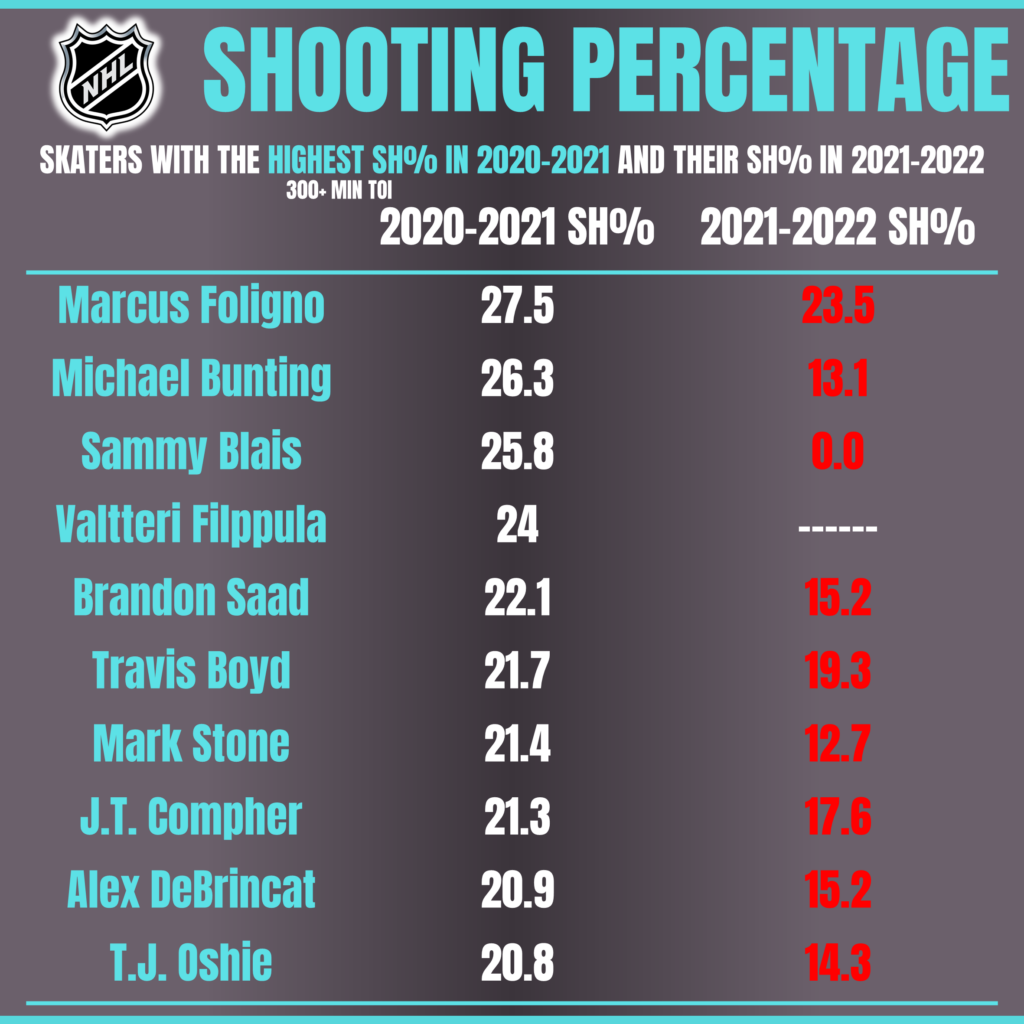
What’s a goal? What’s the point of points? How do I calculate plus/minus? If you have ever asked yourself these questions, you’re in the right place.
In this entry of Inside the Stats we are going to quickly run through the absolute basics of NHL skater (i.e. not goaltender) stats. Many hockey fans already know these stats inside-and-out but, if you want a refresher, stick around! If not, click HERE to browse through other Inside the Stats entries.
Goals, Assists and Points
Goals, assists and points are the stats cited by the vast majority of the hockey world when comparing and/or evaluating forwards (and defensemen to a lesser degree). In later entries of this series we will discuss all the reasons why that is a flawed approach, but for now let’s content ourselves with discussing what these stats are.
Goals are self-explanatory – almost to the degree that they do not warrant an explanation. But, for the sake of completeness: A player is deemed to have scored a goal when they are the last player on their team to touch the puck before it enters the opposing teams net. An important point to stress here is the differentiation from soccer, where a defensive player can score an “own-goal” if they are the last player to touch the ball before it enters their net. “Own-goals” do not exist in hockey – a defensive player can deliberately shoot the puck into their own net and the goal will simply be awarded to the last player to touch the puck on the offensive team.
Assists are slightly more complicated than goals. Generally, the last two players on the offensive team to touch the puck before the goal scorer are awarded assists – but there are many caveats to this. For every goal scored two, one or zero assists can be awarded. Zero assists are awarded if the player who scores the goal is the first player on their team to gain “control” of the puck before the goal is scored. This means a player on the opposing team last had control before the goal scorer. The situations where one and two assists are awarded follow from this definition – if the last player to have control before the goal scorer is a member of the goal scorers team, that player is awarded a primary assist. If the player with control before the primary assister is also a member of the goal scorer’s team, they are awarded a secondary assist.
Points = Goals + Assists. The NHL does not differentiate between primary and secondary assists in this calculation, both are worth one point. A forward’s point totals are a great indicator of how skilled and effective they are, but not a perfect indicator. For one, secondary assists are largely “luck-driven” and often can inflate an unskilled players point totals who has the benefit of playing with more skilled players. There is a lot more I can (and will!) say on the topic of solely points based forward evaluation, but we’ll save it for later entries of Inside the Stats.
Plus/Minus
Plus/Minus is a commonly cited stat so I will mention it here, but it should never be used for player evaluation. Ever. Full stop. It is a garbage stat. Seriously, if you are lucky enough to not know what Plus/Minus is, don’t read the next paragraph. You’re better off clicking on whatever advertisement you currently see on this page. Even if you’re a female and it’s an ad for boner pills I promise it will have a more positive impact on your life than reading about Plus/Minus.
A player is awarded a “plus” (+1) if their team scores an even-strength, 6-on-5, or shorthanded goal while they are on the ice, and a “minus” (-1) if the opposing team scores an even-strength, 6-on-5, or shorthanded goal while they are on the ice. A player’s Plus/Minus is the sum of their pluses and minuses.
Much of the mainstream hockey media uses plus/minus as an indicator of a players defensive ability – a positive value indicating the player is strong defensively, and a negative value indicating a player is weak defensively. We will deconstruct this flawed approach in a future entry of Inside the Stats.
Shots and Shooting Percentage
A player is awarded a shot if they shoot the puck and they either; (1) score, or (2) the opposing goalie stops them from scoring (i.e. makes a “save”). Thus, if the player shoots and the puck misses the net, is blocked by an opposing skater, or hits the post they are not awarded a shot.
A player’s shooting percentage is their total goals divided by their total shots. It is that simple. Shooting percentage is one of the hallmarks of “luck analysis” in hockey, so expect us to revisit it frequently in the future. For now I’ll leave you with the figure below and a general statement: even for the most elite of shooters it is very hard to consistently maintain a shooting percentage above 20%.

Penalties
If a player breaks a rule, they are given a penalty by the referees. In reality it is more complicated than this simple statement – lot’s of analysis’ have shown that factors other than rule breaking have a large impact on the frequency and amount of penalties handed out. But I digress… As I have said about many other topics already, this is is discussion better suited for a future entry of Inside the Stats.
There are two main types of penalties – minor penalties and major penalties. Minor penalties are awarded for minor infractions such as hooking, slashing, cross-checking, tripping, elbowing, high-sticking, holding, etc. Major penalties are awarded for (you guessed it!) major infractions, such as fighting, hitting from behind, spearing, intent-to-injure, etc. You can learn about all the types of penalties HERE.
We’re not going to dive deep into the intricacies of different penalty calls as we are more concerned about the stats side of penalties. A minor penalty results in a player having an additional 2 penalties-in-minutes (PIM) added to their stat line, whereas a major penalty results in an additional 5 PIM.
“Stat X” per Games Played and “Stat X” per 60 Minutes
“Stat X” per game played (X/GP) and “Stat X” per 60 minutes (X/60) are useful tools for contextualizing stats. They are very similar metrics – X/GP normalizes “Stat X” based on the number of games a specific player has played in over the period in question (the “period in question” can be a single season, a single playoffs, the players career, etc.) X/60 normalizes “Stat X” based on the specific player’s ice time over the period in question.
Here are the equations, replacing “Stat X” with Goals (you can use these equations for basically any stat, with the exception of “percentage stats):

It is immediately obvious why it is useful to contextualize stats this way. Briefly, evaluating players using “per games played” stats allows us to evaluate two players who have played a different amount of games (one of the players may have missed time due to injury, being scratched, etc.). Using “per 60 minutes” stats allows us to take this a step further by accounting for differences in ice time between players, even if they have played the same number of games.
I hope you enjoyed this very basic look at skater stats! Click HERE for more Inside the Stats statistic explainers, and remember to check back soon! The data side of this great game is constantly evolving and Inside the Stats will evolve with it! Expect frequent updates to the statistic explainers as well as completely new explainers on cutting-edge stats!
Discover more from Inside The Rink
Subscribe to get the latest posts sent to your email.




5 thoughts on “Inside the Stats: Basic Skater Stats”